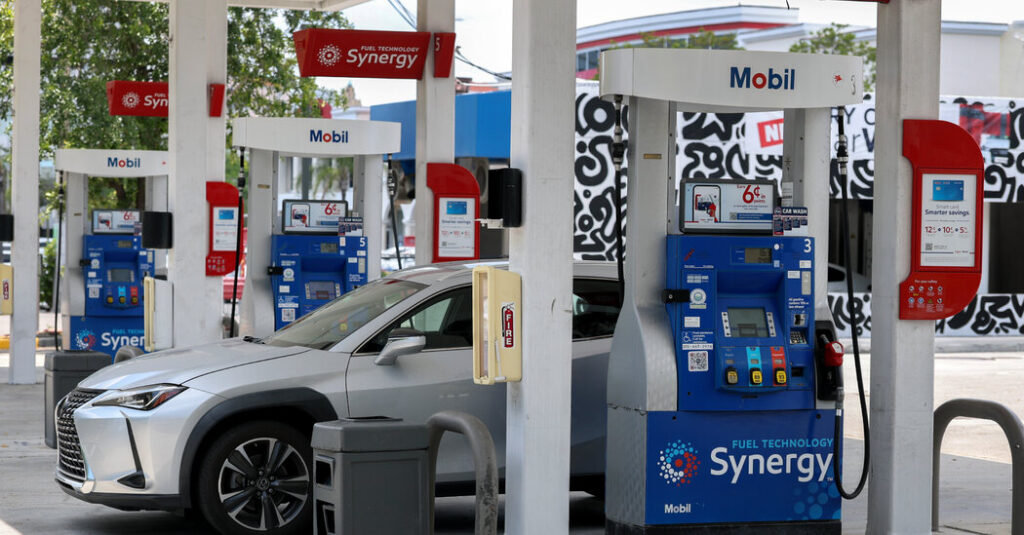For the first time in two decades, Americans are projected to spend less than 2 percent of their disposable income on gasoline in 2025, according to the U.S. Energy Information Administration (EIA). This marks a 20-year low in fuel spending, a development that has been touted as positive economic news for President Donald Trump and the broader U.S. economy. But while this decline offers short-term financial relief for drivers, it raises larger questions about the long-term sustainability of our energy choices, climate commitments, and national resilience.
Gasoline Spending in Context
Gasoline has historically been one of the most visible costs for American households, shaping everything from commuting patterns to consumer sentiment about the economy. The EIA’s forecast that fuel costs will average below 2 percent of disposable income in 2025 reflects a convergence of factors: lower oil prices, improved vehicle efficiency, and a stabilizing demand for gas as more consumers transition toward hybrid and electric vehicles.
On the surface, these numbers appear encouraging. After all, when families spend less at the pump, they often have more money for essentials like housing, healthcare, and education—or discretionary spending that stimulates local economies. Yet the story isn’t simply about cheaper gasoline. It’s about how we choose to respond to this moment of economic reprieve.
The Climate Connection
While Americans celebrate lower costs at the pump, the bigger picture is impossible to ignore: fossil fuel consumption remains one of the largest contributors to climate change. Transportation alone accounts for nearly one-third of all U.S. greenhouse gas emissions. Lower gas prices often encourage increased driving, which could offset efficiency gains and slow the adoption of clean energy alternatives.
At Sustainable Action Now, we recognize that affordable fuel is only one piece of the puzzle. The urgent priority is reducing emissions, curbing air pollution, and building a transportation system that works with, not against, our climate goals. When gas feels cheap, the temptation is to delay investment in cleaner alternatives like electric vehicles (EVs), mass transit, and renewable infrastructure. But history shows us that oil markets are volatile—what’s affordable today can spike tomorrow, leaving families vulnerable again.
Economic Relief vs. Sustainable Progress
There’s no denying that for millions of families, saving money at the pump in 2025 is a welcome relief. But this financial breathing room should be seen as an opportunity, not an endpoint. Policymakers, businesses, and individuals can reinvest these savings into building a sustainable future:
- Adopting EVs and hybrids: With tax credits, expanded charging infrastructure, and falling battery costs, electric vehicles are becoming increasingly accessible.
- Supporting renewable energy: Savings on gasoline can be redirected into solar panels, home energy efficiency upgrades, or community renewable projects.
- Investing in public transportation: Lower fuel costs should not undermine the urgent need for reliable, clean mass transit systems that reduce traffic congestion and emissions.
Political Implications
For President Trump, the EIA’s projection is being framed as a win for household economics. However, focusing solely on short-term consumer costs risks overlooking the much larger stakes of energy and climate policy. The next few years will be pivotal in determining whether the U.S. uses this low-cost fuel environment as a stepping stone toward sustainability—or a pause that delays progress.
Looking Ahead
The fact that gasoline spending is hitting a 20-year low is a noteworthy economic milestone. But it should not lull us into complacency. Every gallon of gasoline burned continues to release carbon dioxide into the atmosphere, intensifying the climate crisis that communities across the nation are already experiencing through extreme weather, rising seas, and ecosystem disruption.
The true measure of progress isn’t how little we spend on gas—it’s how quickly we can transition away from fossil fuels altogether. Lower fuel costs present a chance to accelerate investments in clean energy, rethink urban planning, and prioritize policies that ensure long-term climate stability.
At Sustainable Action Now, our mission is clear: use every opportunity—whether economic shifts, technological advances, or policy changes—to drive forward the transition to a sustainable, just, and resilient future. Cheaper gasoline is temporary. A clean, climate-secure future is permanent.


